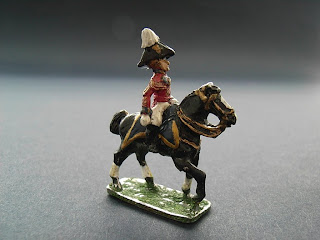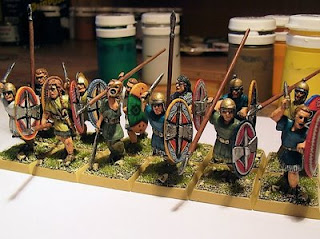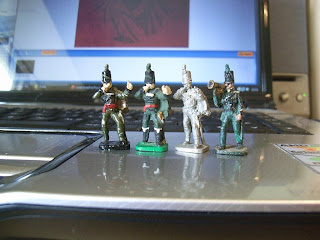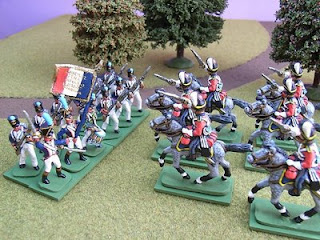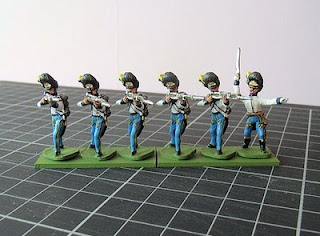 Here are the first of the Austrians, the Grenadier Company of the 51st Gabriel Spleny Regiment. I picked them not just because of the silly name but because they were listed in my copy of Blandford’s Uniforms of the Napoleonic Wars as having dark blue collars and cuffs that I thought would look good against the white uniforms.
Here are the first of the Austrians, the Grenadier Company of the 51st Gabriel Spleny Regiment. I picked them not just because of the silly name but because they were listed in my copy of Blandford’s Uniforms of the Napoleonic Wars as having dark blue collars and cuffs that I thought would look good against the white uniforms.I have been looking forward to painting these chaps for a long time never having painted any Austrians before – I think its something about those furry hats! Whatever the appeal these have to be some of my favourite Hinton Hunts ever. The stance and proportions of the firing figure are just right and the Officer really looks the part waving his sword about and urging the men on. The figures are all vintage ones repainted by me, they are:
AN33 Hungarian Grenadier, firing
AN30 Hungarian Grenadier Officer, charging
I’m now getting stuck into the musketeer companies of which there are three to make up the full 24-figure unit.
